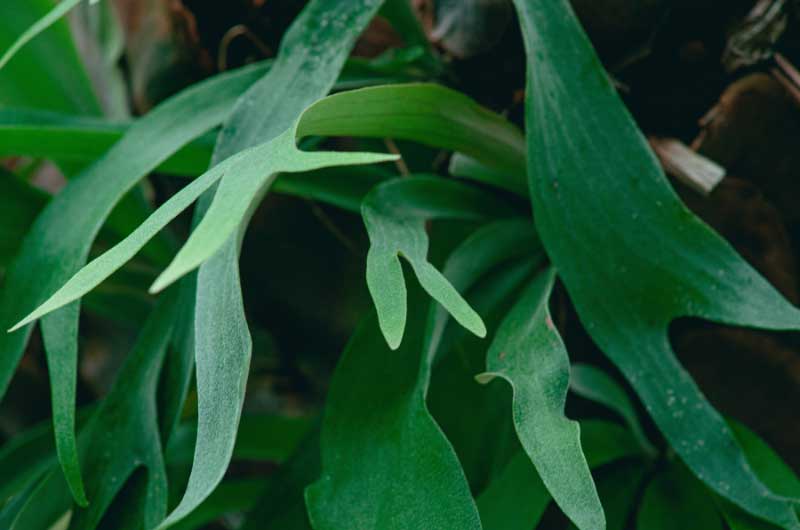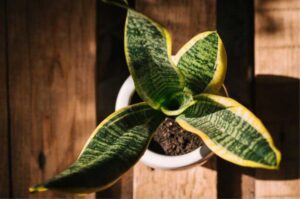Do Staghorn Ferns Grow New Shield Fronds? (Answered)
Undoubtedly, no species is as classy as Staghorn ferns. This epiphytic fern grows uniquely from almost all house plants. You can use it as a fantastic centerpiece in your home. It can grow as a huge house plant if provided with appropriate growing conditions.
Being unique from other plants, it has huge leaves called fronds. The plant has three parts: root ball, antler front, and shield frond. The shield frond, a large leaf that can be up to three feet long and one foot wide, grows in a circle around the base of the Staghorn fern. It protects the roots and provides water and essential minerals to the plant.
Now the new gardeners are often worried about what will happen to their Staghorn fern if the shield frond dies. Does the fern grow a new shield frond? Here is the answer.
Yes, Staghorn’s are unique ferns that grow new shield fronds only at the base of the old ones. New shield fronds will grow from the first level of roots in a baby frond. When this occurs, the baby frond will die.
Do not cut off the baby frond until you see the new shield frond growing from that level.

Will the shield frond grow every year?
Staghorn’s can grow up to six feet tall and have multiple layers of fronds around their stems. If you have a Staghorn and notice that your old fronds are not growing back this spring, don’t worry—you’re not doing anything wrong!
It’s normal for Staghorn not to produce new shields every year. They just won’t form if there aren’t enough nutrients available in your soil or if you don’t provide adequate humidity levels (40-60%).
If you want to help your plant grow more shield fronds at its base, try placing it near natural water sources like plant saucers filled with pebbles or rocks that hold water from rainstorms (or even put them under dripping faucets).
This way, when conditions are too dry indoors during the winter months, you’ll still have plenty of moisture on hand for any thirsty plants nearby–including that pesky Staghorn!
What to do if my Staghorn fern has no shield frond?
- When you are growing Staghorn ferns, it may happen that there will be no shield fronds. If this happens to you and your plant has grown to a size where the top of the plant is not visible, you don’t need to worry; there is a solution.
- You can use a tuft of moss or sphagnum moss when there are no shield fronds to get them started again.
- You can cut off part of a mature leaf on one side of a shield frond and let it dry off for about two weeks.
- Then place it in damp soil so that the base of this stem is covered with moss or sphagnum moss, but its top remains exposed above ground level (this will be where new growth starts).
- In less than two months, roots will form at their base, and if conditions are right for growth, new leaves will grow from these roots!
When will the Shield fronds appear at the base of an existing shield?
- In 10 months or so, you’ll see a new shield frond appear at the base of your existing shield. It will look like a tuft of moss or sphagnum moss, and it’s another baby frond!
- This new growth can be removed when it’s still small and tender to help keep your current Staghorn fern healthy and looking good.
How to take care of a new frond?
Here’s how to care for your new frondy friend:
- Shield fronds grow in a fan-like shape and are known as fan palms. They thrive on a trunk with the leaves originating from a central place and laying flat against the ground.
- The shield frond requires light, water, and nutrients to grow, as with all plants.
- To ensure you have the right conditions for a healthy plant, it’s best to place your shield frond in an area that receives bright but indirect sunlight.
- You should always keep shield fronds in a humid environment—around 70 percent is ideal—and water when the soil feels dry between watering cycles or when its leaves begin to droop.
- If you’re moving your shield frond from one location to another (for example, if you’re repotting it), make sure that both places are warm and well-lit before transplanting it. Otherwise, there’s a high chance that it’ll die due to shock after being moved from one spot of relative comfort into another too quickly.
- Shield fronds prefer warm temperatures and moderately moist soil. The ideal temperature range for growing new shield fronds is between 20 and 30 degrees Celsius (68 to 86 degrees Fahrenheit).
- They can tolerate cooler climates during dormancy but avoid frosty nights or sudden dips below freezing.
- Shield fronds are very sensitive to soil pH levels, so test yours before planting your new plant if you’re unsure of its optimal range of 5.5–7.5.
- As with many other plants, it’s best to avoid using limestone as part of your soil mix; instead, use dolomitic lime or wood ash as amendments for calcium carbonate (the main limestone component).
- Shield fronds also like soils with lots of organic matter such as peat moss or compost mixed into them—this helps provide extra nutrients and improves drainage in sandy soils where these plants often grow wild along riverbanks!
- The best way to ensure that your shield frond receives the nutrients it needs is by using fertilizer. Fertilizer will help promote healthy growth while preventing algae from developing as quickly on your plant leaves as it would if you didn’t add any extra nutrients!
- You should use slow-release fertilizer every two weeks or so until the end of winter when you’ll need it less frequently since sunlight won’t be able to penetrate deep enough into water temperatures below 60 degrees Fahrenheit (15 Celsius).
- In general, shield fronds don’t like to be transplanted once established. However, if you want to transplant your new frond, make sure that it is small enough that you can move it easily.
- If you have a large, established frond and decide to relocate it anyway, be extremely careful not to damage the plant!
Some interesting facts about Staghorn ferns
- In their native environment, Staghorn ferns grow out of the ground on a trunk, with the leaves originating from a central place and lying flat against the ground. They typically grow up to about 6 feet tall.
- The Staghorn fern is not a fast-growing plant. It grows slowly but can get very large. The rate at which it grows depends on the species and the conditions it is growing.
- However, don’t expect a Staghorn fern to grow quickly in your home environment—it may take decades to reach maturity!
- Staghorn ferns need more nutrients to grow than most other plants.
- Staghorn ferns are among the most common plants to grow in a home aquarium. They are easy to care for and can be used to create a beautiful aquascape that will make your tank stand out from all others.
However, these plants require additional nutrients for them to grow properly.
Staghorn ferns are fun to grow!
Staghorn ferns are fun to grow! There are many different types you can plant and care for. You can grow them indoors or outdoors, even in containers on your window sill if you don’t have space for a garden.
Staghorn looks especially nice when planted in hanging baskets because they have long, graceful fronds that hang down over the side of the container.
This plant is happiest in a hot, humid environment with plenty of shade and room to grow. It needs water every three days or so, but not too much! You can also fertilize it once every two weeks with a slightly diluted mixture of water and fertilizer.
Don’t plant them in direct sunlight because they can get sunburned easily, but the shield frond loves being outdoors during the day.
If you live in a windy area, make sure that you have some sort of shelter for your plant before planting it outside so that gusts won’t damage its leaves or branches as they blow around.






